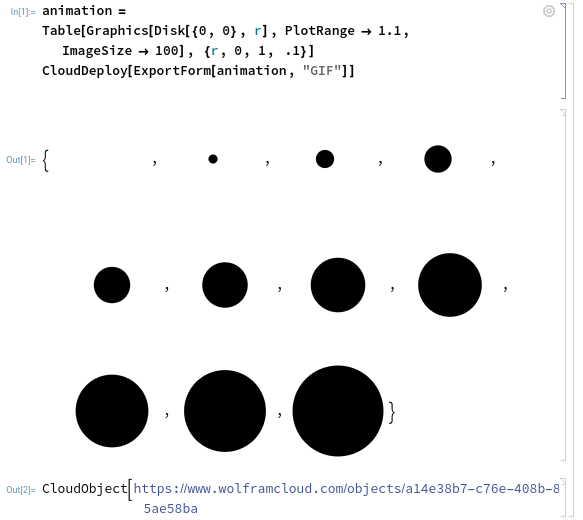Wolfram Language
Reviewed July 17, 2019Wolfram Language, a confusing rebranding of Mathematica, is a programming language and notebook-based browser environment. It has 5,000 functions and data sources built into the language -- no imports required. It has broad applications in engineering, sciences, mathematics, finance and education.
Product Feel
- 👍 Grows on you: gets better once you master the basics
- 👍 Enjoyable to write: concise & powerful, but hard to read
- 👍 Addicting: sometimes it unexpectedly does something cool
- 👍 It’s at its best when it has precisely the library you need
- 👎 Functions are “magical”: not extensible or debuggable
Basic Usage
The following video computes all of the words that are in both of Wolfram's built-in dictionaries for French and English:
The following photo demonstrates crawling the web two-hops deep. The first line shows how we can scrape a webpage for its links via Import. The next line shows how NestList repeatedly applies a function successively more times to an initial argument. The final lines construct two functions, links which gets the hyperlinks for an input link (# stands for the argument and & ends the function), and mapLinks which inputs a list and maps (/@) links over it and then flattens the resulting list of lists. Finally, we use NestList to apply mapLinks two-levels deep.

Contextual Documentation
Hovering over any Wolfram function brings up contextual documentation, which you can click on for further reading.
Embedded OAuth
Evaluating certain expressions, such as SocialMedia["Twitter"], automatically start OAuth flows to login to the third-party application from Wolfram to be able to pull data from that app. This makes it incredibly easy to use basic integrations. Unfortunately, they were limited in their actual usefulness, being able to only pull limited subsets of user data.
Rich content in expressions

Creating HTTP Endpoints
The CloudDeploy function can turn certain Wolfram expressions into HTTP endpoints with live URLs. The following creates a static endpoint that returns a JSON object:

The following creates an GIF from a table of images, and makes it available at a URL:

They have a file-system interface as well for organizing web page files. Below it is used with Wolfram's templating language to populate an HTML template with data from a Wolfram expression:

Pricing

Comprehensive documentation

Wishes
(Correction Oct 2, 2019.) Thanks Carl Lange for pointing out that I can already do all of my wishes in the tool!- Get a list of US presidents (could only get one at a time)
- Use natural language input dynamically (get a picture of X animal)
- Make an image animate at 30FPS
- Catch an error